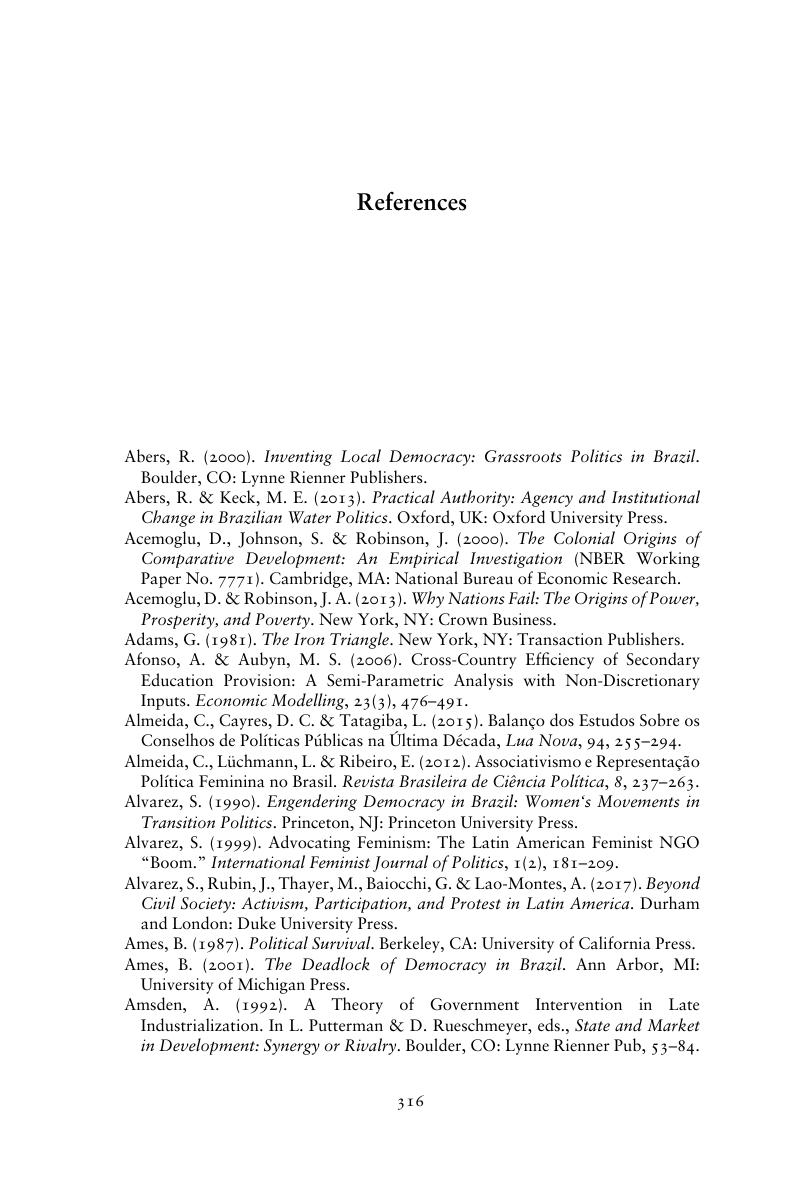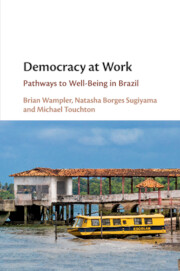Book contents
- Democracy at Work
- Democracy at Work
- Copyright page
- Contents
- Figures
- Tables
- Preface and Acknowledgments
- Interviews
- Abbreviations
- Introduction
- 1 Democracy at Work
- 2 Building Pathways for Change
- 3 Research Design, Methods, and Variables
- 4 Reducing Poverty: Broadening Access to Income
- 5 Improving Health: Saving Lives
- 6 Empowering Women: Saving Mothers and Enhancing Opportunities
- 7 Educating Society: Promoting Public Education and Learning
- 8 Pathways at Work: Lessons from Brazil’s Poor Northeast
- Conclusion
- Appendix Democracy at Work Pathways to Well-Being in Brazil
- References
- Index
- References
References
Published online by Cambridge University Press: 28 September 2019
- Democracy at Work
- Democracy at Work
- Copyright page
- Contents
- Figures
- Tables
- Preface and Acknowledgments
- Interviews
- Abbreviations
- Introduction
- 1 Democracy at Work
- 2 Building Pathways for Change
- 3 Research Design, Methods, and Variables
- 4 Reducing Poverty: Broadening Access to Income
- 5 Improving Health: Saving Lives
- 6 Empowering Women: Saving Mothers and Enhancing Opportunities
- 7 Educating Society: Promoting Public Education and Learning
- 8 Pathways at Work: Lessons from Brazil’s Poor Northeast
- Conclusion
- Appendix Democracy at Work Pathways to Well-Being in Brazil
- References
- Index
- References
Summary

- Type
- Chapter
- Information
- Democracy at WorkPathways to Well-Being in Brazil, pp. 316 - 343Publisher: Cambridge University PressPrint publication year: 2019



